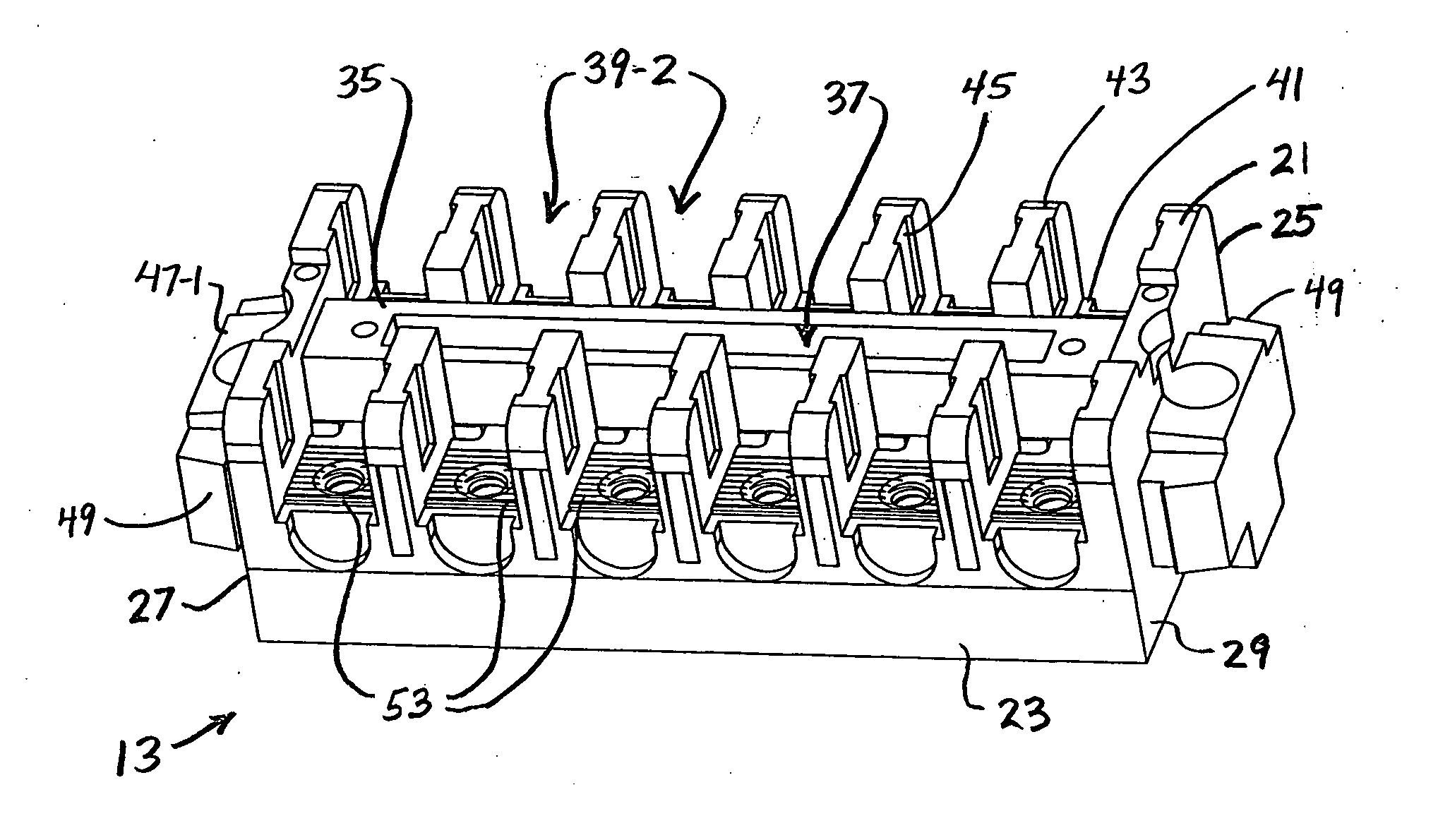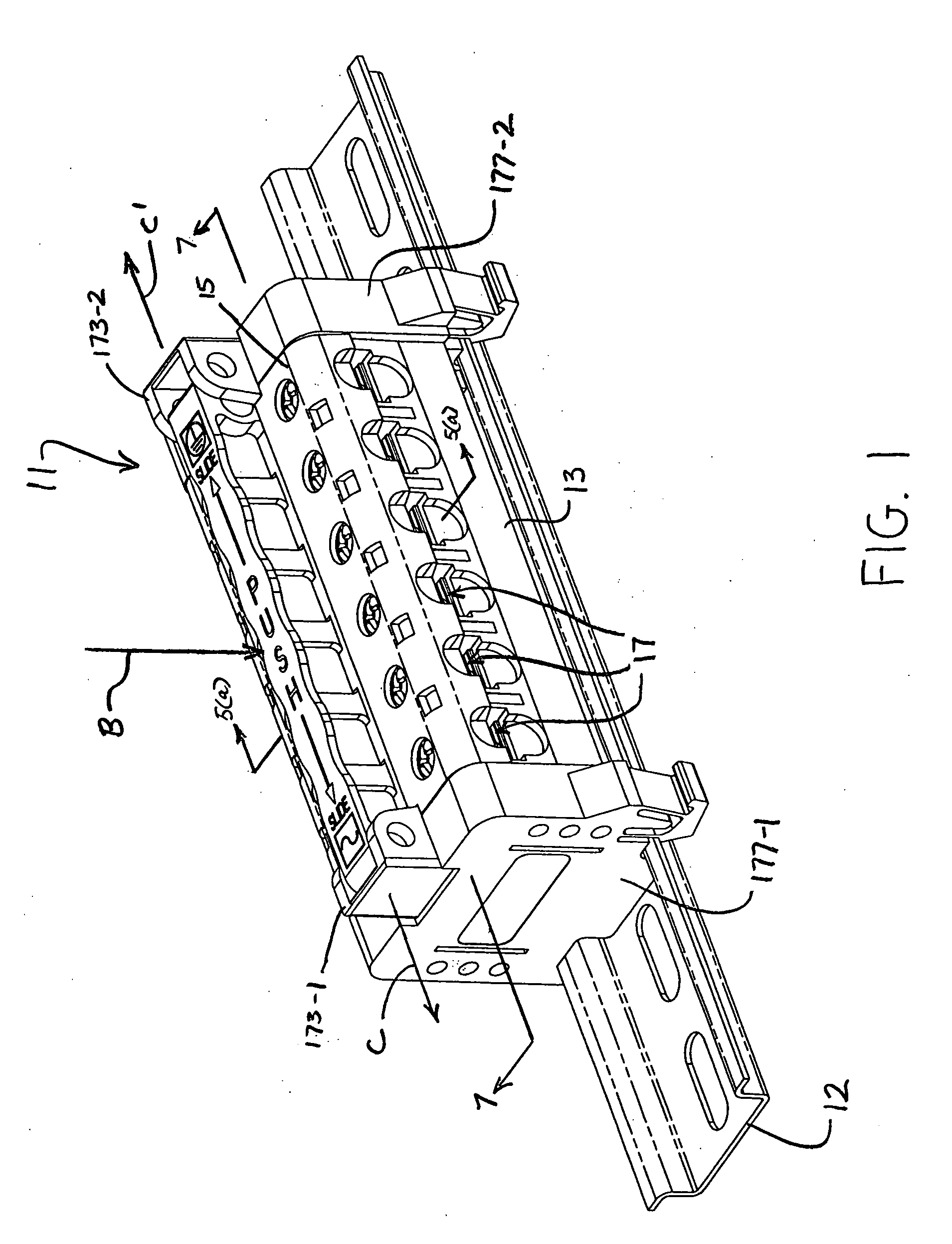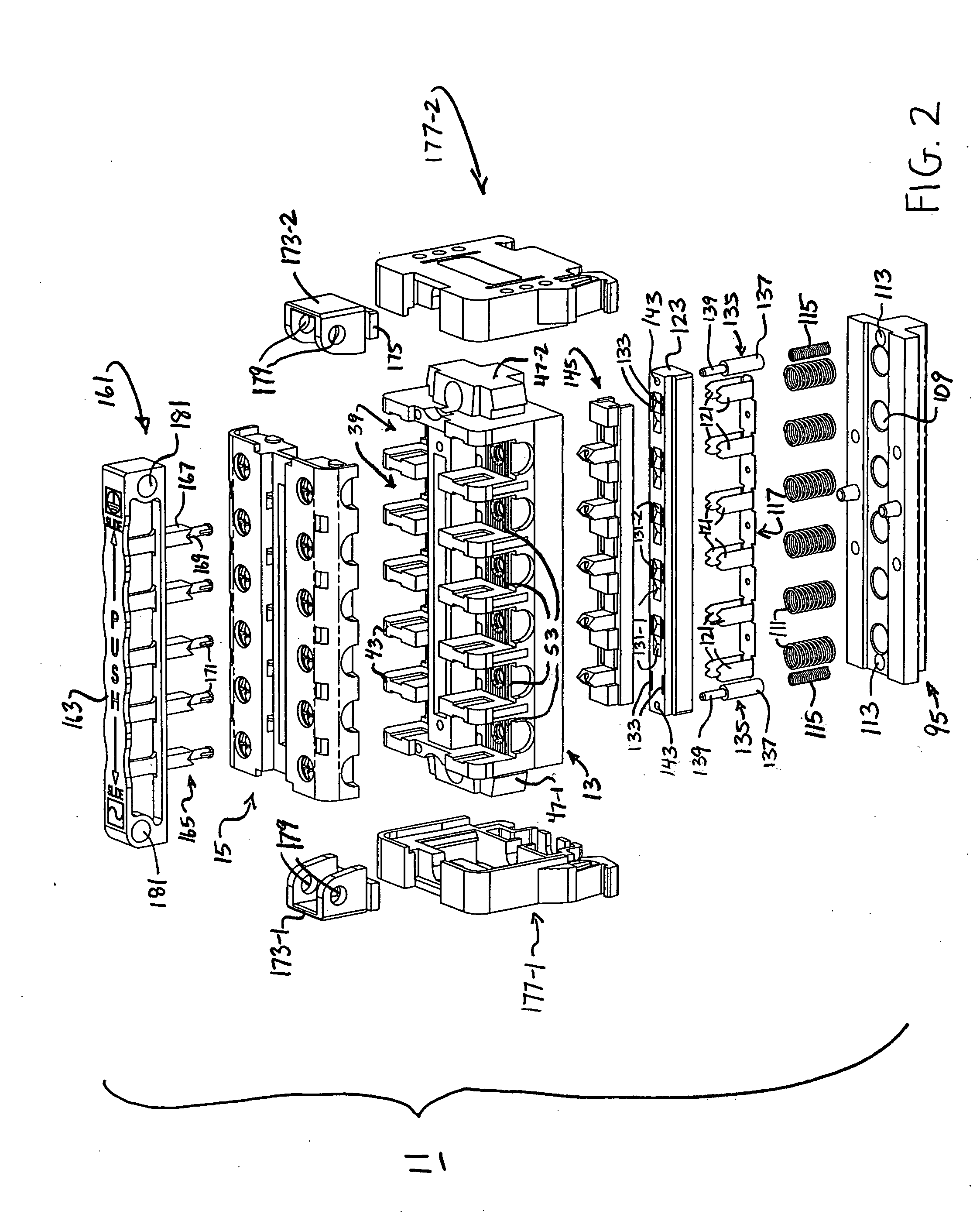Electrical terminal block
a terminal block and terminal technology, applied in the direction of electrical connections, electrical apparatus, electrical connection structural associations, etc., can solve the problems of high (and often potentially fatal) electrical shock, high electrical shock risk, and high electrical shock risk of electricians (or other suitable personnel) who frequently access the terminal block, so as to facilitate and safely conduct coupling and prevent electrical shock
- Summary
- Abstract
- Description
- Claims
- Application Information
AI Technical Summary
Benefits of technology
Problems solved by technology
Method used
Image
Examples
Embodiment Construction
[0041] Referring now to FIGS. 1-3, there is shown an electrical terminal block (also referred to herein simply as a terminal block) constructed according to the teachings of the present invention, the terminal block being represented generally by reference numeral 11. As will be described further below, terminal block 11 can be used to electrically connect at least one pair of wires. In addition, terminal block 11 is adapted to be mounted onto a conventional DIN rail 12, as seen most clearly in FIG. 1.
[0042] Terminal block 11 includes a base 13 and a cover assembly 15 adapted to be removably mounted onto base 13 by means of a forced snap fit. Together, base 13 and cover assembly 15 define six pairs of wire receiving receptacles 17, each pair of receptacles 17 being conductively coupled together, as will be described further below. However, it should be noted that terminal block 11 is not limited to a particular number of pairs of receptacles 17. Rather, it is to be understood that ...
PUM
 Login to View More
Login to View More Abstract
Description
Claims
Application Information
 Login to View More
Login to View More - R&D
- Intellectual Property
- Life Sciences
- Materials
- Tech Scout
- Unparalleled Data Quality
- Higher Quality Content
- 60% Fewer Hallucinations
Browse by: Latest US Patents, China's latest patents, Technical Efficacy Thesaurus, Application Domain, Technology Topic, Popular Technical Reports.
© 2025 PatSnap. All rights reserved.Legal|Privacy policy|Modern Slavery Act Transparency Statement|Sitemap|About US| Contact US: help@patsnap.com



